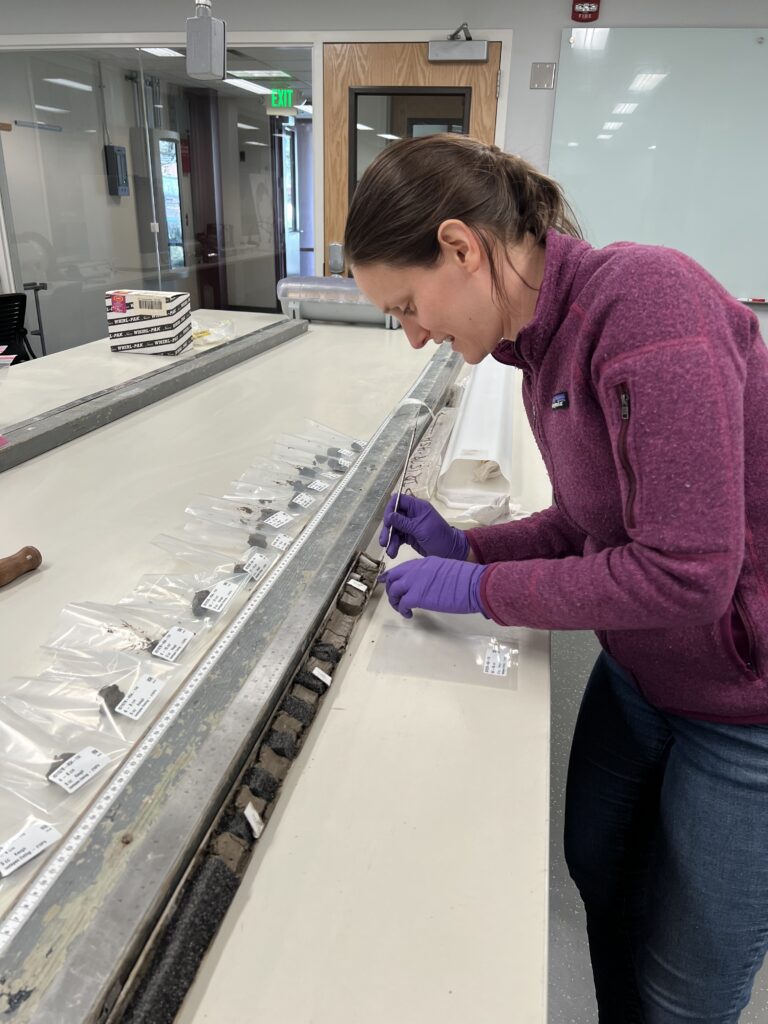2023-2025
Polar warming drives coastal erosion and increases sediment delivery to the coastal ocean, affecting ecosystem processes ranging from primary productivity to carbon sequestration. Tracking changes in sedimentation rate is urgently needed to determine current conditions and measure further change. In polar regions, however, one of the most globally reliable sediment tracers, the radioisotope lead-210 (210Pb), has yielded mixed utility for studies of sedimentation.
To understand the distribution and usefulness of 210Pb at high latitudes, PI Molly and research assistant Tess are using of a wealth of polar sediment cores archived at the Oregon State University Marine and Geology Repository (OSU MGR) combined with data synthesized from the literature. Results provide the first systematic study of Arctic and Antarctic sedimentation. Their meta-analysis of excess 210Pb surface activity and derived sediment and mass accretion rates highlights regions in the Arctic where 210Pb is a useful sediment tracer, tracks the spatial distribution of recent sedimentation, and seeks out records of anthropogenic climate change.
This project is funded through NSF’s Office of Polar Programs Postdoctoral Research Fellowship program.


